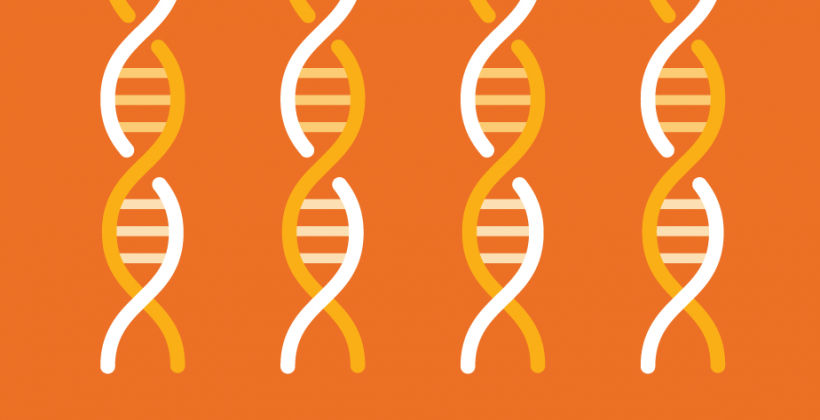In the news: Will eating meat increase your risk of having a heart disease, diabetes or pneumonia?
Last Updated : 10 March 2021Recent headlines claim that eating meat regularly could increase the risk of having up to 25 different diseases, including heart disease, diabetes and pneumonia. However, there are a few things to keep in mind when reading the study’s conclusions.
The study behind the headlines
The recent news follows a new study that looks into the link between meat intake and the risk of 25 common conditions, other than cancer.
The study used data from adults (average age 55 years) registered in the UK Biobank.
Participants started by filling in a questionnaire (known as baseline dietary questionnaires) about their eating habits. They stated how often, how much and what type of meat they usually ate, differentiating between their consumption of red meat (unprocessed beef, unprocessed lamb/mutton and unprocessed pork), poultry and processed meat. There was no explanation of what was defined as processed meat. Some of the participants also completed other online questionnaires to see how their diet changed over time.
Researchers then followed up over a period of 8 years to assess the 25 most common causes (other than cancer) that led to participants being admitted to the hospital, by checking hospital admissions and mortality records.
Researchers concluded that those who ate red and processed meat and poultry regularly had a higher risk of developing several common diseases.
The results suggest that eating 70 grams of red and/or processed meat a day could increase the risk of heart disease, diabetes, pneumonia, diverticular disease and colon polyps roughly between 10-30%. More specifically, eating 50 grams of red meat a day was linked with an 8-21% higher risk of developing these five conditions while eating 20 grams of processed meat a day resulted in an 8-24% risk increase.
More so, eating 30 grams of poultry a day was linked with a higher risk of diabetes and different digestive diseases, such as reflux disease and irritation/inflammation of the stomach and the large bowel.
What to keep in mind when reading the study’s conclusions?
Observational studies can’t prove direct cause and effect.
The study has taken into account multiple health and lifestyle factors such as age, ethnicity, overall diet, body mass index (BMI) and physical activity, that could potentially influence the health outcomes considered. However, the researchers caution that even so, it’s not entirely possible to ensure that such factors had no impact on the final results.
Estimates of meat intake may be inaccurate.
While food frequency questionnaires are one of the best methods available to assess dietary intake, they still have limitations. For example, estimates of the frequency, amount and type of meat eaten (such as what an individual considers to be processed meat) may be subjective and vary between participants. Also, the analysis didn’t assess relevant dietary details such as how meat was prepared (if it was a lean or a fatty cut) or cooked (whether it was grilled or fried, for example).
Meat consumption also has dietary benefits, which need to be considered when reducing intake.
Lean unprocessed red and white meat are good sources of protein and various other nutrients, such as iron, zinc and vitamin B12. Notably, the study found that the intake of both red meat and poultry was linked with a lower risk of anaemia from iron deficiency.
When considering decreasing meat intake to reduce any of the potential risks identified, it’s important to add enough plant-based sources of these nutrients to meet our needs. Read more about plant-based diets here.
The study only considered a specific group of UK participants and may not be representative of other populations.
This was a large study, but it included mostly middle-aged adults (average age 55 years) of white ethnicity (90% of participants) from the UK. Other populations and ethnic groups, with different health, lifestyle and genetic characteristics may have a different disease risk.
What do authorities say?
- National advice on how much red meat people should eat regularly varies, ranging from a maximum recommended intake of 70 g a day (350 g per week) in the UK to 500 g a week in Scandinavian countries. 2
- In general, most countries recommend choosing lean meats removed of any visible fat, over red meat. Plus, most encourage limiting the consumption of processed meat within a weekly or a daily maximum, when not to avoid it completely. 2 You can learn how these recommendations translate to food portions by consulting your national dietary guidelines.
- The World Health Organisation (WHO) recognises that diets high in processed and/or red meats can increase the risk of some types of cancers. 3 In turn, the Mediterranean diet – characterised by low consumption of meat (particularly red meat) and saturated fat and by being high in plant-based sources of protein, such as legumes - has been found to reduce the risk of adverse health outcomes such as cardiovascular disease.4
- If you wish to reduce or cut meat and/or animal products from your diet, consider consulting a professional or registered nutritionist to get professional advice on how to make it in a healthy way.
It might also interest you:
- What is a plant-based diet and does it have any benefits?
- What’s important for vegetarians and vegans to eat?
- Iron: foods, functions, how much do you need & more
- Zinc: foods, functions, how much do you need & more
- Vitamin B12: foods, functions, how much do you need & more
References
- Papier, K. et al. (2021) Meat consumption and risk of 25 common conditions: outcome-wide analyses in 475,000 men and women in the UK Biobank study. BMC Med. 19(53).
- EU Joint Research Centre. Health Promotion & Disease Prevention – Food-based Dietary Guidelines in Europe. Accessed on 6 Mar. 2021
- World Health Organisation (WHO) (2015). Healthy Diet Factsheet No 394. Accessed on 6 Mar. 2021
- World Health Organisation (WHO) (2015). Cancer: Carcinogenicity of the consumption of red meat and processed meat. Accessed on 6 Mar. 2021
- European guidelines on cardiovascular disease prevention in clinical practice (2016). https://cdn.ymaws.com/www.eas-society.org/resource/resmgr/publications/2016_European_Guidelines_CVD.pdf








